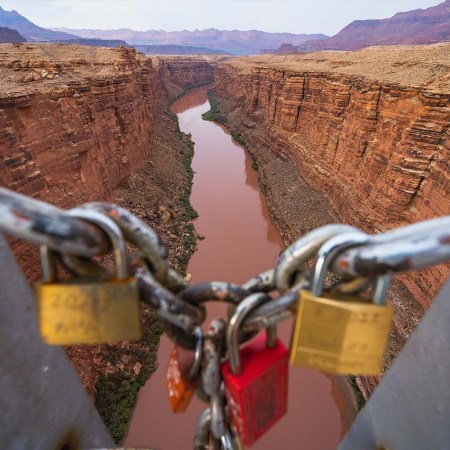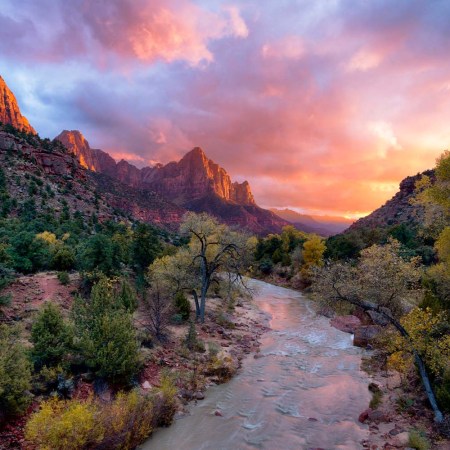One of the hallmarks of national parks in the Southwest are the stunning natural arches that punctuate the landscape. There’s a reason that one of Utah’s national parks is known as Arches National Park, for instance. But these gravity-defying features are subject to the same wear and tear as the rest of the landscape around them — and sometimes, the same arches that once soared over the rest of the landscape can come crashing down to earth.
Unfortunately, that’s precisely what happened this month in Glen Canyon National Recreation Area, which encompasses over a million acres in Arizona and Utah. On August 8, a feature known as the Double Arch — and sometimes called the “Toilet Bowl”, “Crescent Pool” or “Hole in the Roof” — collapsed in Utah. According to the National Park Service’s announcement, officials belive that the collapse was due to water erosion and changing water levels in nearby Lake Powell.
Michelle Kerns, Glen Canyon’s superintendent, stressed the importance of caution around such areas. “[T]his event serves as a reminder of our responsibility and need to protect the mineral resources surrounding Lake Powell,” Kerns said in a statement. “These features have a life span that can be influenced or damaged by manmade interventions. While we don’t know what caused this collapse, we will continue to maintain our resource protection efforts on Lake Powell for future generations to enjoy.”
Finding Solitude in National Parks Helped Me Evolve as a Traveler
How a fateful trip to Badlands National Park changed everythingAs NASA data shows, Lake Powell has seen substantial effects from droughts over the last 20 years. As The Salt Lake City Tribune reported earlier this year, the resetvoir has not been at 100% capacity for years — and recently encountered a record low, when water levels dropped to only 22% of their overall capacity. That could lead to bigger issues than the collapse of rock formations — and yet the Double Arch crashing down is a distinct reminder that all is not well in this region.
This article was featured in the InsideHook newsletter. Sign up now.



















